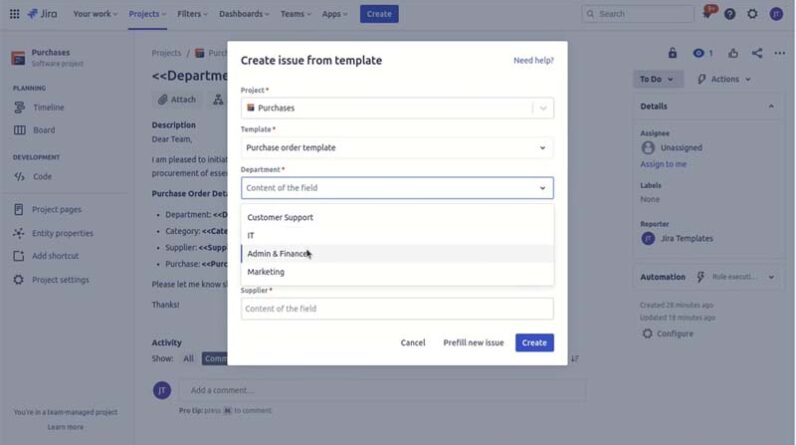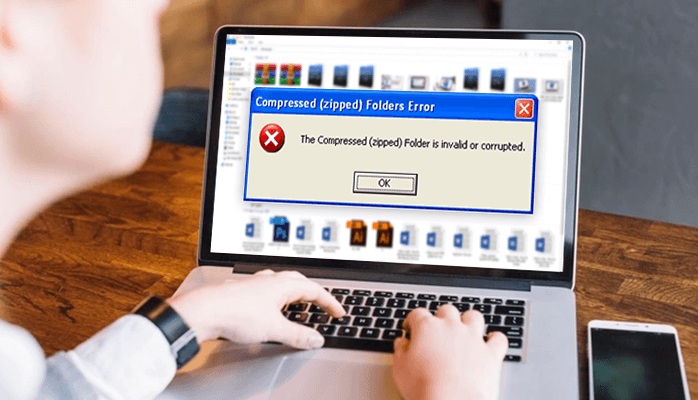
In the ever-evolving world of project management and software development, tools that enhance efficiency and productivity are worth their weight in gold.
Jira is a powerhouse among the many project management platforms available, offering various features to simplify task management, issue tracking, and collaboration.
One feature that sets Jira apart is its issue templates. In this comprehensive blog post, we will explore the world of issue templates for Jira, unveiling what they are, why they are indispensable, and how they can revolutionize your project management.
What are the Issue Templates for Jira?
Jira Templates, often referred to as Issue Templates in Jira, are predefined structures or blueprints for various issues commonly encountered in project management and issue tracking within the Jira software developed by Atlassian.
These templates serve as a starting point for creating consistent and standardized issues, ensuring that teams follow a uniform structure when recording different types of tasks, bugs, stories, epics, and other relevant information.
In summary, Jira Templates are a valuable feature in Jira that streamlines the process of creating and managing issues, enhances consistency, and improves overall productivity in project management and issue-tracking tasks goa escorts service.
Types of Issue Templates for Jira
Issue templates in Jira are designed to streamline the process of creating and managing different issues in a standardized and efficient manner. If you like getting all the best technical things with others, go with the Jira template.
- Epic Templates: Epics are used to group related user stories or tasks that contribute to a larger goal. Epic templates allow you to outline the epic’s goals, scope, and dependencies. They provide a high-level view of project progress and help plan and organize work.
- Custom Templates: Custom templates offer maximum flexibility. They can be created to suit the specific requirements of your project or team. You can define any combination of fields and workflows, making them adaptable to various use cases.
- Feature Templates: Feature templates are often used in product development to describe new features or enhancements. They include fields for feature details, business value, target audience, and acceptance criteria.
- Incident Templates: Incident templates are designed for tracking and managing unexpected issues, outages, or incidents that disrupt normal operations. They include fields for incident details, severity, impact, and steps to resolve the incident.
- Service Request Templates: Service request templates are used for non-technical requests, such as access permissions, equipment requests, or service inquiries. They include fields for request details, requester information, and request status tracking.
- Test Case Templates: Test case templates document test cases in software testing. They include fields for test case names, descriptions, reproduction steps, and expected and actual results.
- Change Request Templates: Change request templates help track proposed changes to a project or product. They typically include fields for the change description, rationale, impact assessment, and approvals required.
- Documentation Templates: Documentation templates are often used for creating and managing project or product documentation. They include document title, description, author, and version control fields.
- Meeting Agenda Templates: Meeting agenda templates help plan and document meeting agendas. They include fields for meeting dates, agenda items, objectives, and attendees.
- Task Templates: Task templates create standard tasks or to-do items. They are often the simplest issue type, including fields like summary, description, assignee, priority, and due date. They are commonly used for managing day-to-day work items.
- Bug Templates: Bug templates are tailored for tracking and resolving software defects or bugs. They include fields like a detailed bug description, steps to reproduce the bug, severity level, and the affected component or software version.
- Story Templates: Story templates are crucial in Agile methodologies like Scrum. They are used to define user stories, typically including fields for the user’s perspective, acceptance criteria, and story priority. Story templates are essential for breaking down larger tasks into manageable units.
What is the importance of Issue Templates for Jira?
Issue templates in Jira are crucial in improving project management and issue-tracking processes. Their importance lies in the numerous benefits they bring to teams and organizations.
- Enhanced Collaboration: Templates ensure all team members are on the same page regarding issue creation and management. This consistency improves collaboration by reducing misunderstandings and communication gaps.
- Process Efficiency: Templates can include predefined workflows and automation rules. This streamlines the issue lifecycle and ensures that issues follow the desired processes without manual intervention.
- Compliance and Governance: In regulated industries, issue templates can be designed to ensure compliance with industry standards and governance requirements. They help organizations maintain transparency and accountability.
- Documentation and Reporting: Templates encourage thorough documentation of issues. This documentation is invaluable for tracking progress, generating reports, and conducting post-project analysis.
- Adaptability (Issue Templates for Jira): Issue templates can be updated and refined as project requirements change. This adaptability allows organizations to evolve their processes and templates to meet new challenges.
- Time Efficiency: Templates save time when creating issues because users don’t have to configure every field and parameter from scratch. This efficiency is especially valuable for teams handling numerous tasks or issues simultaneously.
- Customization: Issue templates are highly customizable. Teams can tailor them to suit their specific project requirements and workflows. This adaptability ensures that templates remain relevant and aligned with changing needs.
- Standardization: Templates promote best practices and standardization across projects and teams. They provide a consistent framework for issue creation, helping organizations maintain organized and efficient work environments.
FAQs
Can Issue Templates Be Shared Across Different Projects in Jira?
=> Yes, Jira allows you to share issue templates across different projects. This feature ensures consistent templates can be reused across various teams and projects, simplifying template management.
What Types of Issue Templates Are Available in Jira?
=> Jira offers various issue templates, including task, bug, story, epic, and custom templates.
Closing Opinion on Issue Templates for Jira
Jira issue templates are a potent tool for enhancing your organization’s consistency, productivity, and collaboration.
By understanding their types, creating custom templates, and using them effectively, you can streamline your project management processes and stay ahead in today’s fast-paced work environment. If you have any queries, reach us via the comment box. Thanks for reading!






